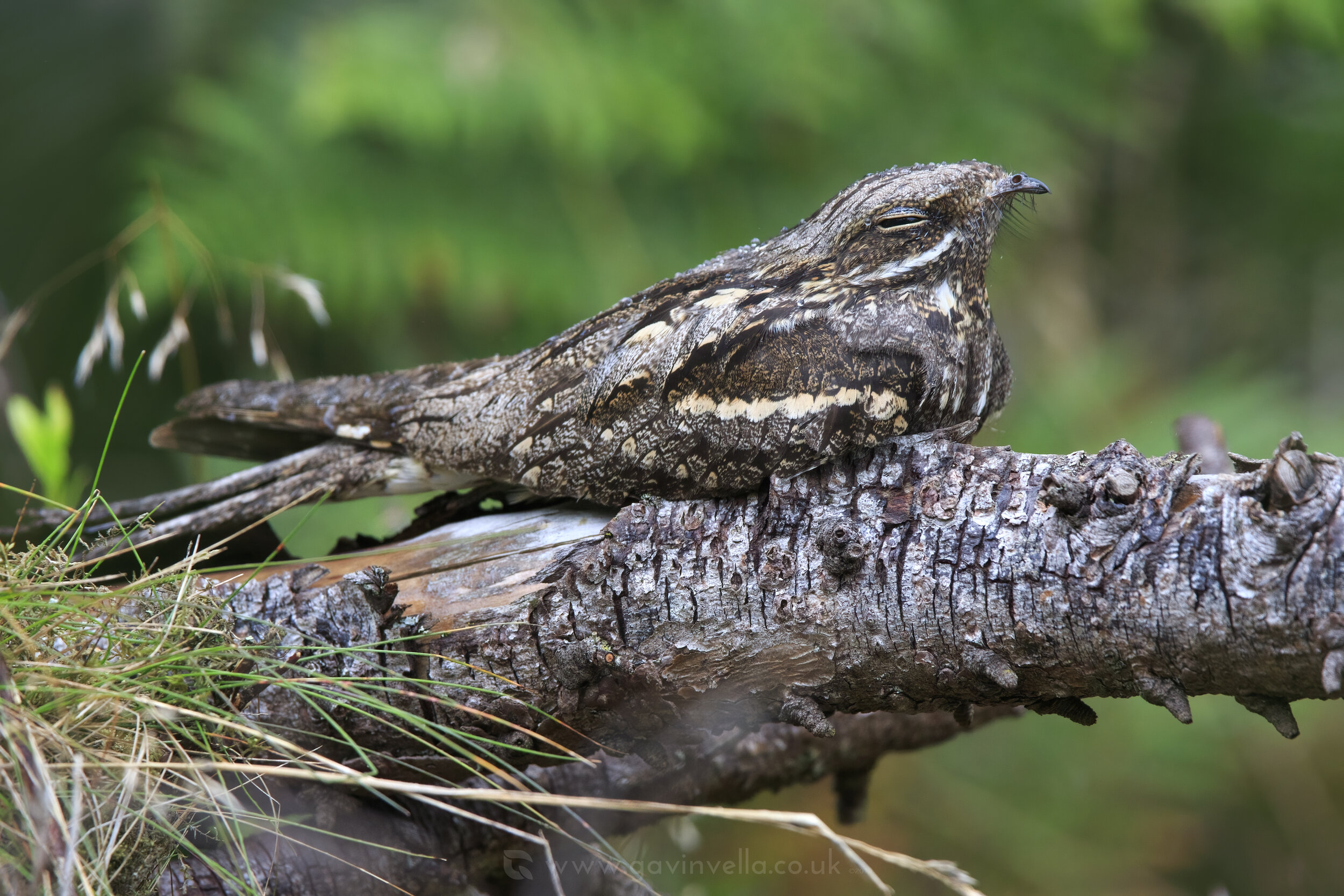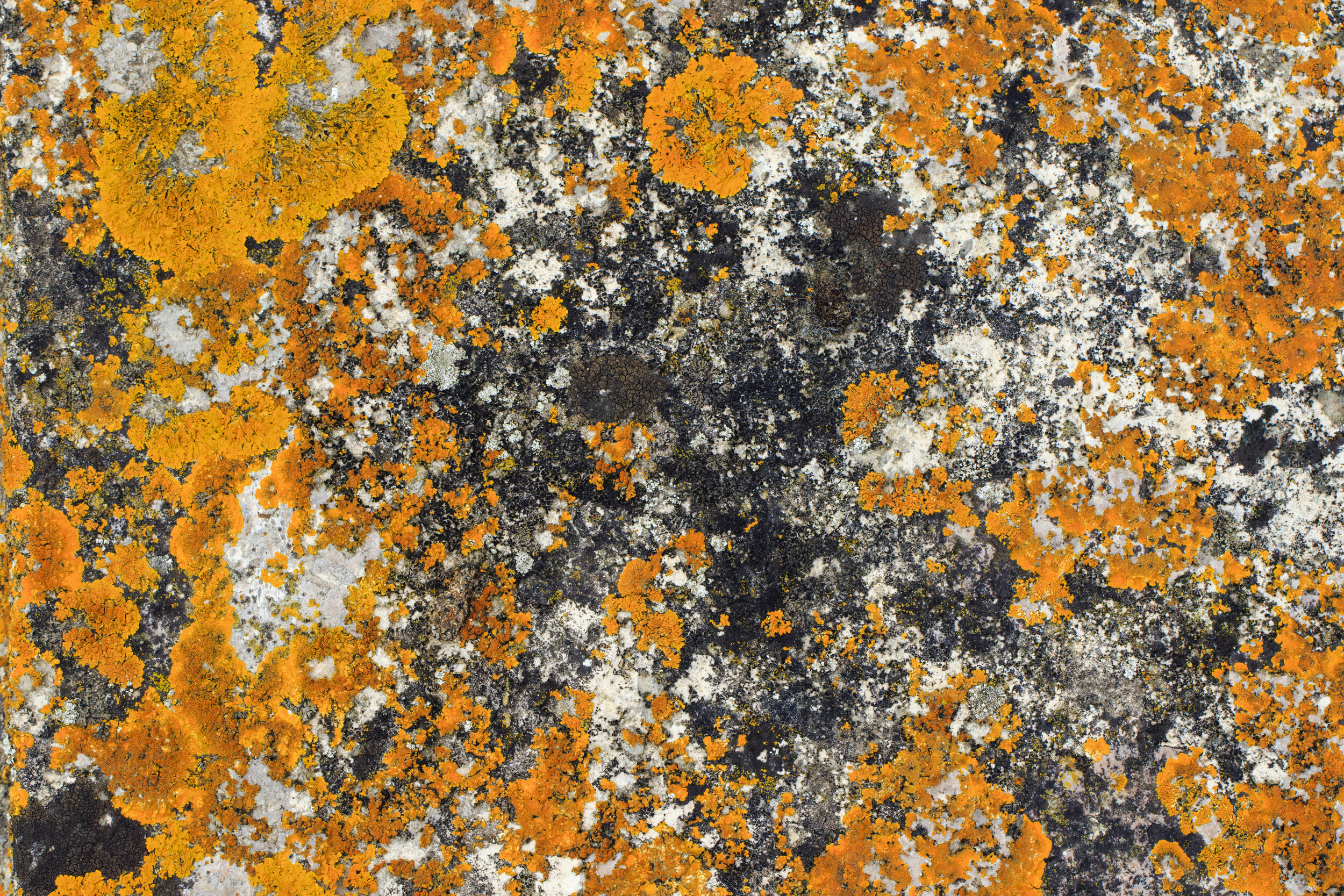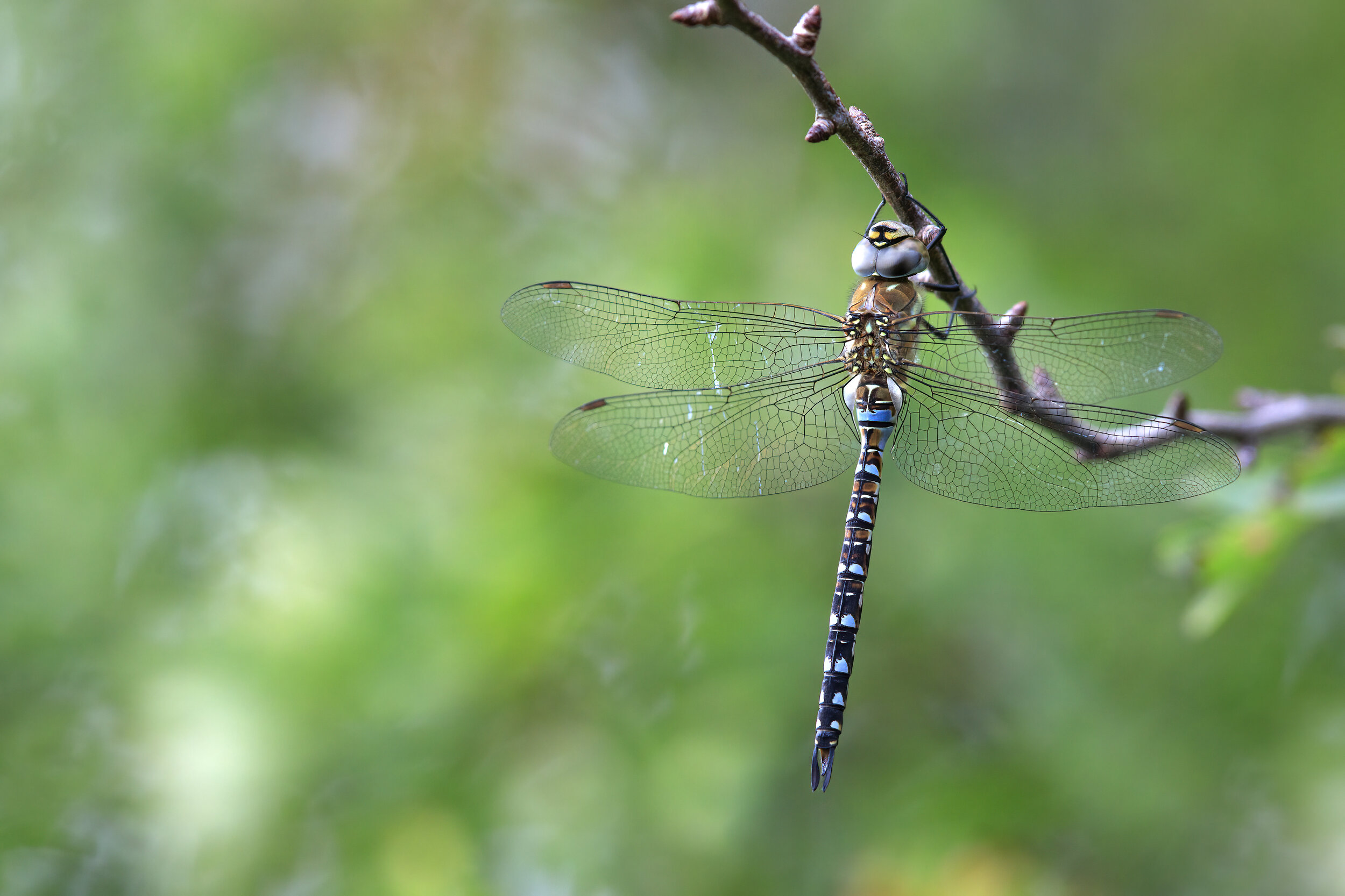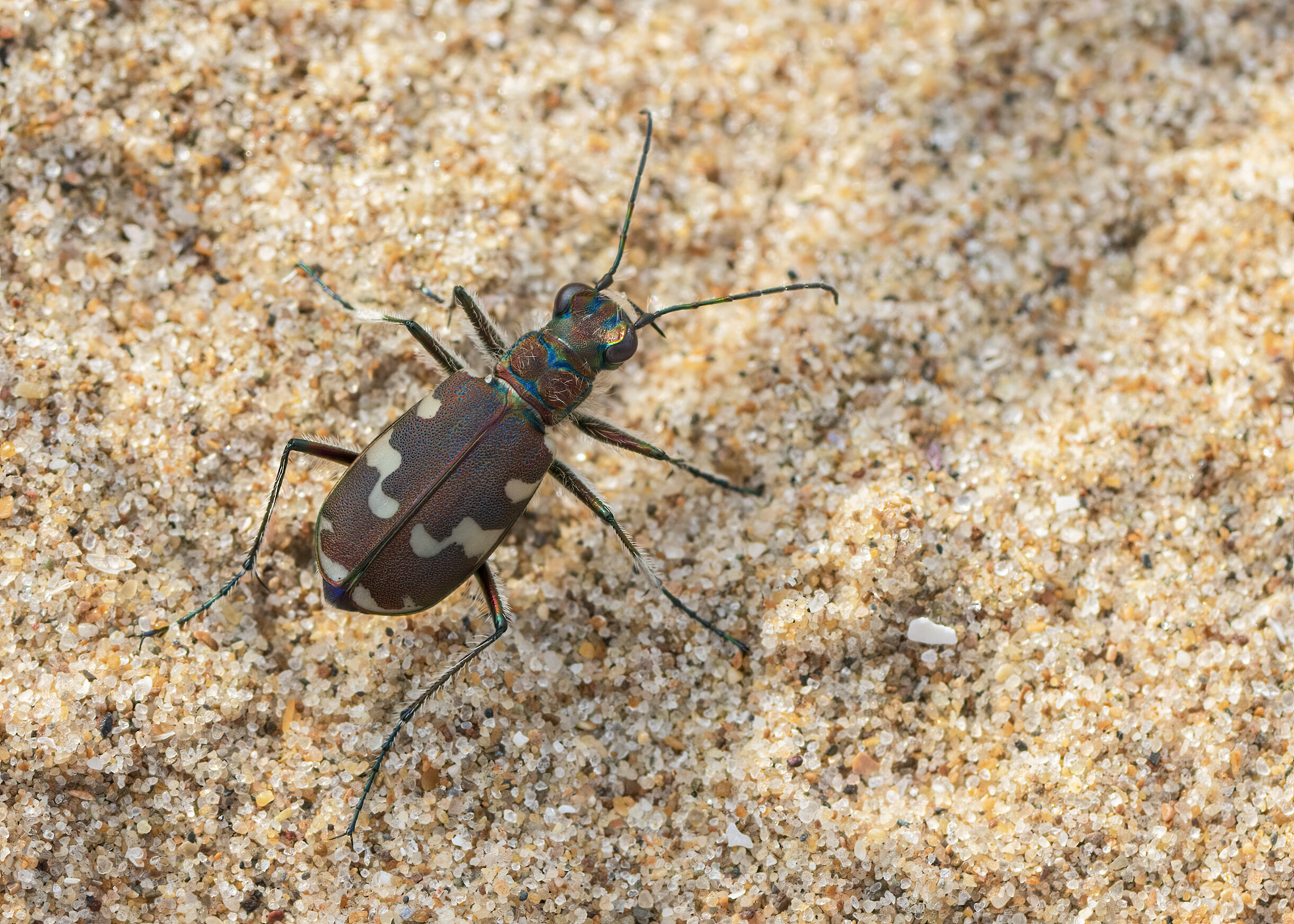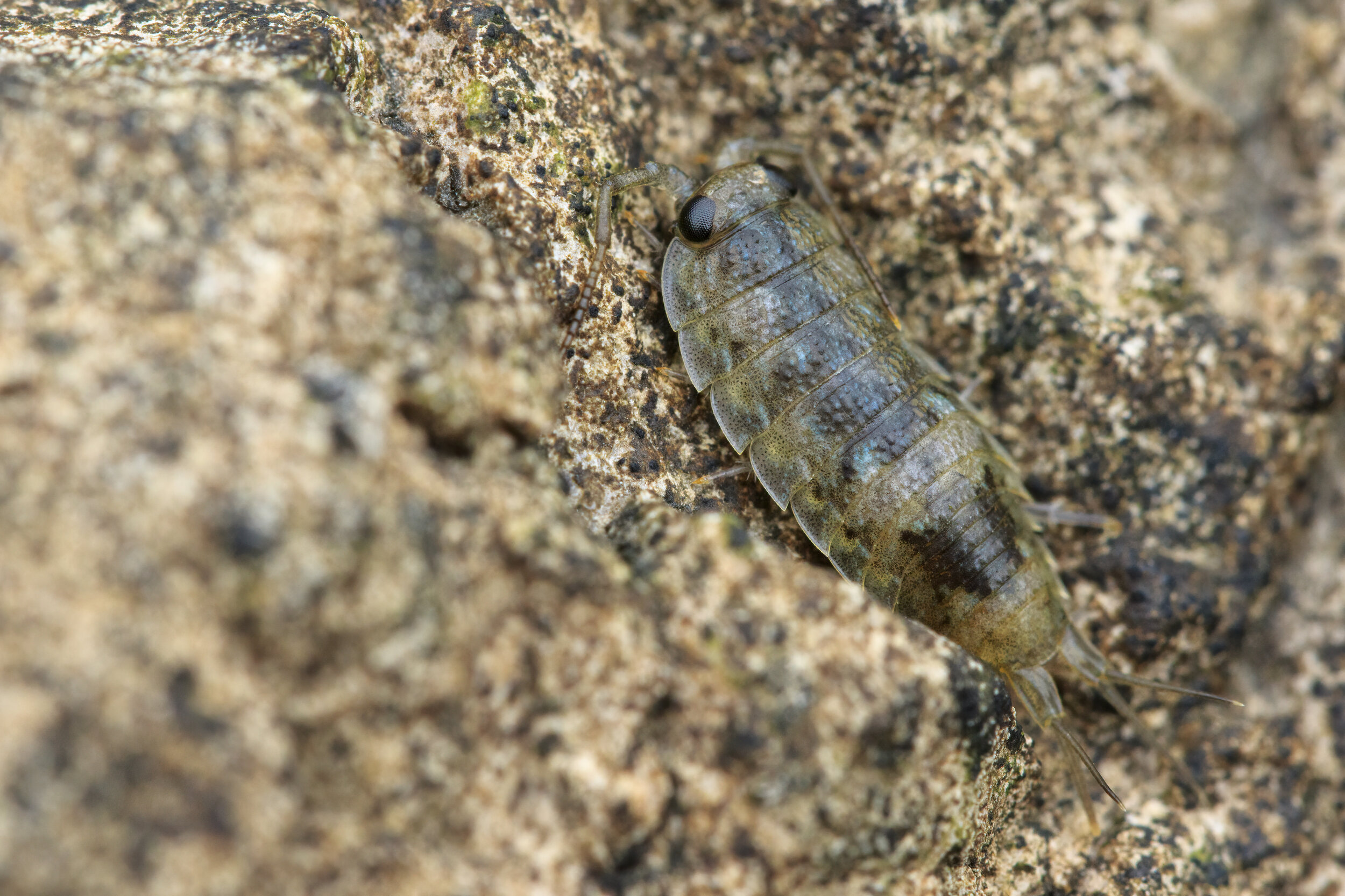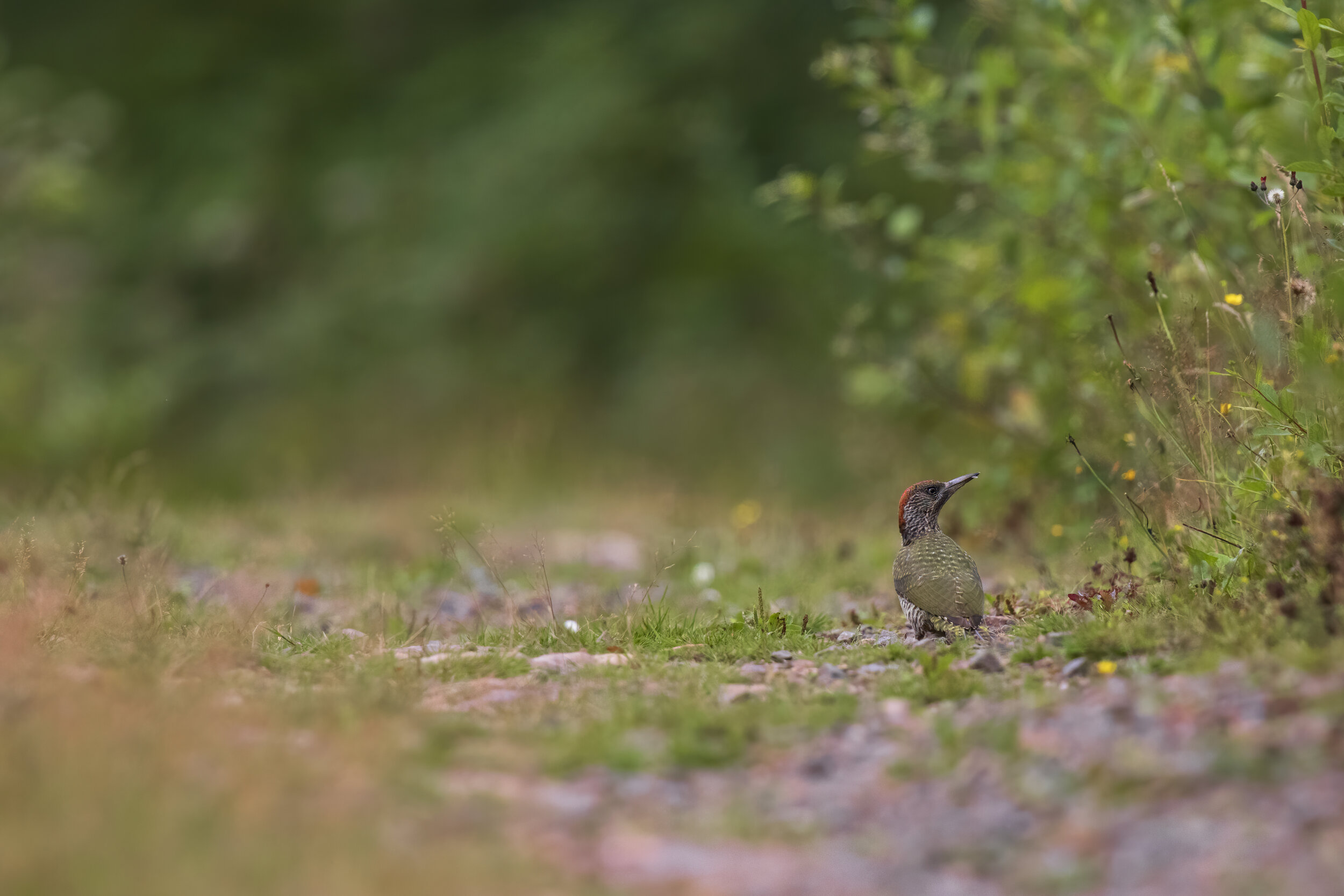The picture you see below, will likely be the last of the season, as my last nest has sadly been predated. Over-all the season was a success, with all my other pairs successfully fledging two chicks each. That is a great year for these birds that don’t have a very high success rate. I suspect the failure of this particular pair was down to a Tawny Owl, that was very persistent throughout the night, doing low flights right over the nest site. I was surprised after a nocturnal session how many males were still churring last week, but I suspect it was more of a ‘goodbye’ churr, cuing to the females that the time has come, because the following days, all of my roost sites were un-occupied and I found this female miles from her nest, roosting in a tree. It’s probably a welcomed changed after sitting in mud and poo for most of the season.
Here’s a short clip of the pair seeing off a hunting Tawny Owl:
Midnight used this log roost almost every single day as it was close enough to the nest that he could keep an eye. Not all males will do this, but it made sense for him todo this the second time around, as the first clutch failed. Two sets of eyes are better than one. I only located one of the fledglings, so it’s likely that they’ve left the clear-fell now and headed to more suitable feeding grounds ready to migrate for the first time to Africa. It always amazes me how chicks know where to go..
I’ve done so much travelling between work and random birding trips since my last blog, so I won’t bore you with all the details. Here’s a selection below that highlights my favourite moments, most of which were on the Gwent Levels but some, like the Southern Dune Tiger Beetle were from the Gower. Small Red-eyed Damselflies were numerous at the reen entrance to Goldcliff Lagoons which was nice, as I’ve never seen one officially before. Lesser Marsh Grasshoppers seem to be turning up everywhere on the Levels now I know what I’m looking for. Their sound is actually quite similar to Field Grasshopper but the notes are spaced differently. You can hear it better when slowed down so I’ve including a recording below.
Sound
Below are some targeted flock recordings from Goldcliff Lagoons on a nocturnal visit. It’s quite difficult to get one of the platforms to yourself at high tide with so many visitors, especially this time of year where it becomes more popular due to arriving migrants, so I visited after dark, on a late high tide. There were still quite a few birds feeding in the dimming light, but even after dark, simply moving the dish around you can target specific species. It’s great hearing such a variety of waders in one place, with the added sounds of Shelduck, Little Egret and Greylag Geese in the background. It’s also been beneficial to me, to see different variations of calls on the spectrograph, from wader species, as it helps me ID some of the more unusual calls you get on Nocmig recordings.
Nocmig
What a turn out so far! In my last blog I spoke of how autumn migration has well and truly began, and whilst everyone knows this, I didn’t expect to get all these species over the house already! Wood Sandpiper was on my wish-list and it didn’t take long to get one! I had a Wood Sand long before I had a Green Sandpiper, which goes to show it’s not all about how common the species is, you really could end up with anything on these recordings, regardless of where you live.
Below I put together a selection of different calls, all of which I had within one night, just so you can see the visual differences side by side.
Here’s a few more species, all dated accordingly, but I’ve also had quite a few Dunlin, Ringed Plover, Whimbrel, Crossbill, Swifts, House Martin, Swallow, Oystercatcher, Moorhen, Grey Heron, Coot, Spotted Flycatcher and many unknown smaller birds that are going to take a while to ID.
I’ll leave the blog with a Robin recording, which seems to be taking over at the moment.

